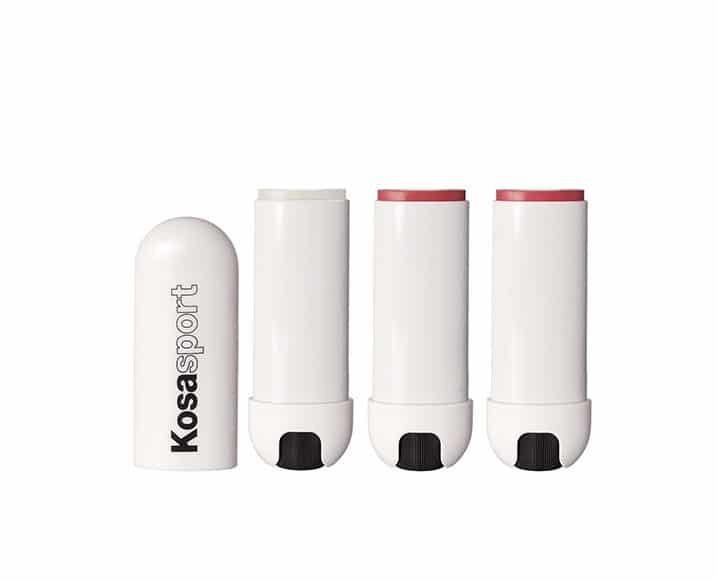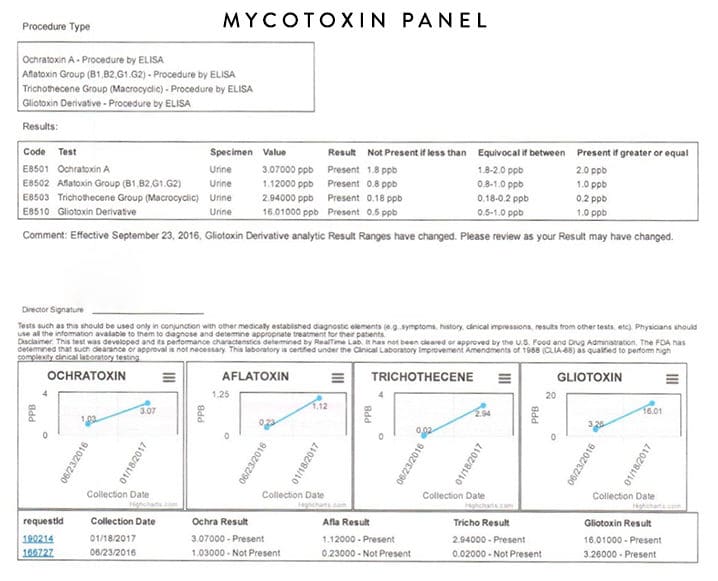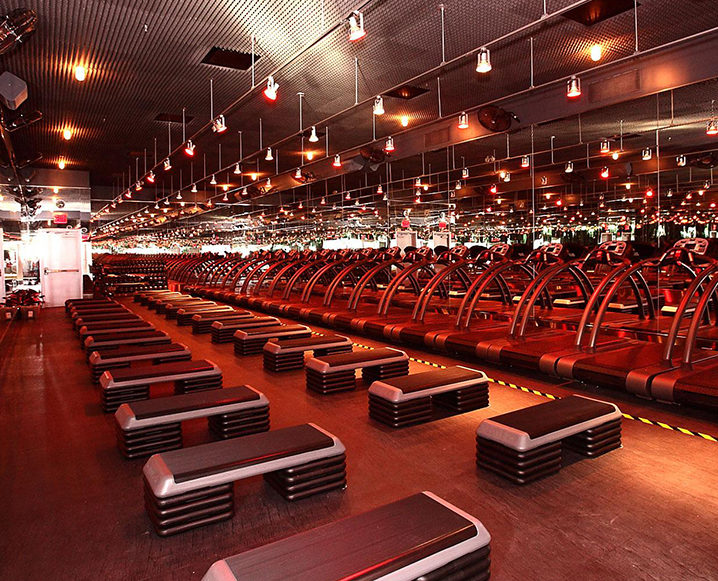
It may surprise you, but your brain may be your most flexible body part. Emerging science on 'neuroplasticity' shows that our minds and brains are able to adapt and change far more dramatically than we may have previously assumed. That's why meditation, yoga and breathwork practices can all have such a profound effect on our sense of well-being. One science-driven therapeutic technique used to help master the mind-body connection is called biofeedback, and it's a potent, pill-less tool for managing conditions from chronic pain to anxiety.
Biofeedback trains patients to control some of the body's automated responses -- including the perception of pain. With practice, one can consciously change bodily sensations, reactions to thoughts, stress response and even certain electrical activities of the brain. We asked functional medicine expert, Dr. Josh Axe, to tell us all about biofeedback and how we can start mastering the mind-body connection through the lens of science and technology...
What Is Biofeedback?
Biofeedback therapy is a type of training program with the goal of teaching patients to control involuntary physiological processes — meaning those that are both mental and physical — that contribute to painful symptoms and distress. A report published in Mental Health in Family Medicine words the biofeedback definition as “a mind–body technique in which individuals learn how to modify their physiology for the purpose of improving physical, mental, emotional and spiritual health.”
Biofeedback therapy is sometimes used to manage high blood pressure, muscle pain or tension, anxiety, IBS symptoms and insomnia. What do so many of these health problems have in common? They’re triggered, or at least made worse by, chronic stress. For that reason, some experts believe that biofeedback is beneficial and able improve overall health and wellness because it’s effective as a natural stress relieving technique.
How The Therapy Works
Various forms of biofeedback therapy — performed using certain muscle relaxation, breath and mental exercises — are now being proven in numerous studies to treat more than a dozen health conditions. But how does this mind-body intervention work? At its roots, this therapy helps reduce a wide range of symptoms by lowering sympathetic arousal. Through identifying and changing certain mental activities and physical reactions, biofeedback trains patients to help regulate their own unconscious bodily processes and better control their stress response. Biofeedback therapy acts as a natural painkiller and a natural headache remedy, among other things.
Some experts use the metaphor of “learning to putt a golf ball” to describe how biofeedback works. As someone practices putting and seeing where the ball goes, the feedback helps to improve their next stroke. In biofeedback, a patient follows measurements of their physiological responses — and as they move in a healthier direction, positive reinforcement and learning take place.
After reviewing more than 60 studies related to biofeedback, The Institute of Psychiatry at King’s College London described the therapy as a “non-invasive, effective psycho-physiological intervention for psychiatric disorders,” concluding that over 80 percent of studies reported some level of clinical decrease in symptoms as a result of biofeedback exposure. According to their research, biofeedback interventions have been used successfully to treat common disorders including anxiety, autism, depression, eating disorders and schizophrenia.
But biofeedback therapies aren’t just useful for managing mental disorders — they’re also becoming more common in the treatment of injury recovery and chronic pain. Because therapists now offer several different biofeedback modalities, experts recommend patients try multiple bio-regulating approaches during their sessions. This has been shown to be most effective in significantly reducing symptoms.
Conditions that are commonly treated with biofeedback therapies now include: chronic pain, muscle tension or spasms, urinary incontinence (frequent urges to urinate), high blood pressure (hypertension), tension or migraine headaches, TMJ symptoms (temporomandibular joint dysfunction), trouble sleeping or insomnia, digestive symptoms including constipation, IBS and diarrhea, anxiety and depression, eating disorders, ADHD and autism spectrum disorders, epilepsy, cancer recovery, heart disease, and just about any other condition made worse by stress...
What is A Session Like?
A trained biofeedback therapist first takes an assessment of a patient’s condition, usually by performing several tests. These tests help the practitioner determine how their symptoms might be minimized by learning to manipulate involuntary physical and mental behaviors.
Biofeedback requires specialized equipment. A biofeedback machine converts physiological signals (like heartbeats and brainwaves) into meaningful information that the patient can understand. The types of tests that are frequently used in biofeedback therapies are those that measure skin temperature, heart rate, muscle tension and brainwave activities. Biofeedback machines that are used to performed these tests include skin surface scans, electromyography and MRI brain scans.
Currently, the most popular type of biofeedback therapy performed by doctors is called “electroencephalographic neurofeedback.” Anxiety disorders are the number one type of health problem treated through this biofeedback training, although other popular uses include pain management. In many biofeedback settings, small electrodes are attached to a patient’s skin. This sends feedback to a visible monitor, tracking and displaying the patient’s physiological symptoms.
Because sessions require active patient participation, biofeedback therapy is somewhat similar to certain aspects of physical therapy (PT). Like PT, biofeedback training usually involves practicing at home between sessions, includes some trial and error to determine what works best and requires patience on the part of the patient.
Most biofeedback therapy sessions take about 30 to 60 minutes. The typical course of treatment usually lasts two to three months in order to provide the most benefits. Some patients, however, choose to participate in biofeedback therapy for much longer, sometimes even for years. The goal is for the patient to be able to practice self-regulation techniques that they’ve learned from their therapist on their own, even after formal sessions end and the monitoring machines are no longer used.
The 6 Benefits of Biofeedback Therapy
Reduces Chronic Headaches
Because it can lower someone’s stress response, clinical studies shown that biofeedback is effective in reducing the frequency and severity of tension and migraine headaches. One study published by Harvard Medical School found that biofeedback training allowed many patients to decrease their dependence on pain medications and to experience less pain overall. (Although researchers also found similar benefits from teaching patients general relaxation techniques alone without additional using biofeedback.)
Patients in the Harvard study also learned pain theories regarding relaxation techniques. A portion also went through additional education about biofeedback training. All patients showed a statistically significant decrease in the frequency and severity of the headaches in the first 12 months; that benefit continued for 36 months. Both groups also reported lower medication use and less medical care costs.
Helps Regulate Digestion
Biofeedback therapy is considered a well-established treatment modality for patients with several forms of chronic constipation (including dyssynergic defecation and fecal incontinence). Randomized controlled trials have found that 70 to 80 percent of all patients undergoing specialized biofeedback training in treatment centers experience improvements in symptoms.
Therapists now use biofeedback to help teach patients suffering from reoccurring constipation to better sense and control muscles in their digestive system that are related to bowel movements. For example, impaired rectal sensation and poor ability to squeeze muscles in the abdomen are both corrected using biofeedback maneuvers. Although barriers to biofeedback still exist within the general population (including lack of insurance coverage, distance to local treatment facilities and acute medical issues), researchers continue to work on improving ways to offer this therapy in an affordable manner to those with serious digestive complaints.
Another study found that both home-based and office-based biofeedback therapy were effective for the “number of complete spontaneous bowel movements per week as well as patient satisfaction with bowel function.” Research such as this shows the potential to broaden the availability of biofeedback therapy through home sessions without disrupting efficacy.
Reduces Anxiety
Biofeedback helps to make patients more aware of how their thoughts, feelings and behaviors all interact. This is why it’s frequently used in conjunction with other therapies, including cognitive behavioral therapy (CBT), or mindfulness meditation training, to reduce someone’s stress response.
As opposed to some forms of treatment, such as medications, biofeedback therapy is a process of training. Trained therapists teach patients to pay more attention to the ways stress impacts the body. For example, anxiety causes someone’s heart rate to speed up, muscles to tense and the mind to worry. This, in turn, makes sleep and relaxation difficult. Through purposefully tracking symptoms and learning over and over again to reduce them using feedback as a guide, relaxation becomes better enforced.
Reduces Pain (Without Pills)
Finding non-pharmacological techniques for controlling both short-term (acute) and chronic pain is now becoming more important than ever, given how much attention has been given to the potential for addiction of pain-killing drugs.
One type of biofeedback, neurofeedback (also known as EEG-biofeedback), is being used in many treatment settings as an alternative method for pain reduction. It’s being used for things like management of strokes, post-traumatic events, headaches, injuries, chronic muscle tension, diabetic neuropathic pain and cancer recovery. Some evidence shows that it takes about 40 to 60 training sessions to achieve the most benefits. Some studies show this amount can result in up to 50 percent less pain depending on the condition. Thankfully, studies suggest it’s useful in both children and adults.
Improves Heart Health
Studies suggest that biofeedback therapy helps improve control over heart rate variability and arousal of the sympathetic nervous system. This neuro-cardio combo is responsible for many of the physical effects of someone’s stress response. Biofeedback training is also important in the treatment of cardiovascular diseases complications including anxiety, trouble sleeping and depression.
One form of biofeedback known as biofeedback-assisted stress management (BFSM) is especially geared towards managing cardiovascular diseases. It aim to lower over-activation of the autonomic nervous system. (Over-activation can negatively affect the heart.) This therapy model could reduce psychologic stress, improve quality of life and improve clinical status in people with heart disease. A 2011 study published in the Cleveland Clinic Journal of Medicine suggests that use of BFSM by heart failure patients may actually cause cellular and molecular remodeling of the failing heart, change abnormal heart rate variability and have a positive impact on side effects due to suffering from a serious chronic disease.
Reduces Hyperarousal + Trouble Sleeping
Electroencephalography (EEG) feedback is now commonly used to control symptoms of hyperarousal, including insomnia and ADHD symptoms.(Hyperarousal is a class of symptoms that often impact people living with PTSD.) Research conducted in 2011 by the Department of Psychophysiology at Helfgott Research Institute in Oregon found that two forms of neurofeedback treatments (sensorimotor protocol and a sequential, quantitative EEG model) successfully demonstrated usefulness for treating insomnia symptoms. After undergoing 20 15-minute sessions, both groups experienced significant decreases in dysfunctional symptoms like daytime sleepiness and hyperarrousal during the night. The study participants also reported significant improvements in scores on several insomnia measurement scales (Insomnia Severity Index, Pittsburgh Sleep Quality Inventory , PSQI Sleep Efficiency Test, and Quality of Life Inventory).
How to Find a Good Therapist
The Association For Applied Psychophysiology & Biofeedback (AAPB) offers resources on its website to locate a biofeedback therapist in your area. The AAPB encourages patients to receive training services from therapists who meet at least the minimum standards of knowledge, training and experience required to be certified by the Biofeedback Certification International Alliance (BCIA).
Keep these tips in mind when looking for a therapist:
Many state licensing boards include the practice of biofeedback within training for professionals such as psychologists, physical therapists, nurses, physicians and social workers. However, not everyone with one of these licenses will have extensive training or experience in providing biofeedback, so it’s always best to look for a recommendation and additional credentials, certifications, licenses, and so on.
Talk to a therapist before starting training; be sure to make sure the biofeedback type is best matched to treat your problem. The more a therapist knows about your medical history and symptoms, the likelier they are to utilize the most appropriate form of biofeedback and to combine sessions with other effective therapies that will help you.
The Chalkboard Mag and its materials are not intended to treat, diagnose, cure or prevent any disease.
All material on The Chalkboard Mag is provided for educational purposes only. Always seek the advice of your physician or another qualified healthcare provider for any questions you have regarding a medical condition, and before undertaking any diet, exercise or other health-related programs.
The post Biofeedback: An Alternative Therapy That Works Like A Natural Painkiller appeared first on The Chalkboard.
from The Chalkboard http://bit.ly/2KCHsWt
via
IFTTT






 Vitamin A Cheryl Top and Ali Bottoms |
Vitamin A Cheryl Top and Ali Bottoms | Re/done the short |
Re/done the short | Lemlem sustainable mini dress
Lemlem sustainable mini dress Reformation Tropicana One-Piece
Reformation Tropicana One-Piece Raquel Allegra white silk caftan dress
Raquel Allegra white silk caftan dress Entireworld Striped Crewneck Sweater
Entireworld Striped Crewneck Sweater ipanema Free slide Sandals
ipanema Free slide Sandals Dr. Scholl's Herzog Sneakers
Dr. Scholl's Herzog Sneakers






 Margot House
Margot House Take a walk through El Born and peruse the street art and artisan shops. Be sure to check out our favorite shop
Take a walk through El Born and peruse the street art and artisan shops. Be sure to check out our favorite shop 
 Escape the rush of the city and recover from jet-lag at the eco-resort,
Escape the rush of the city and recover from jet-lag at the eco-resort, 


















 SLT | Multiple cities
SLT | Multiple cities






